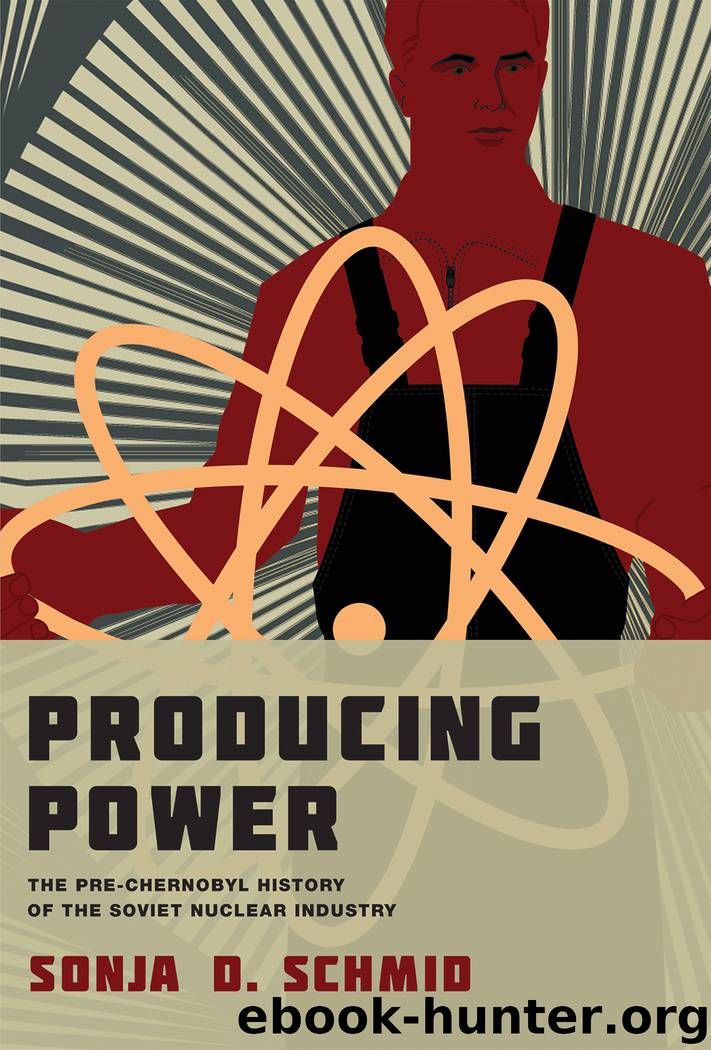Producing Power: The Pre-Chernobyl History of the Soviet Nuclear Industry by Schmid Sonja D

Author:Schmid, Sonja D. [Schmid, Sonja D.]
Language: eng
Format: epub
Publisher: The MIT Press
Published: 2015-02-13T08:00:00+00:00
Epilogue: Writing about Chernobyl after Fukushima
Before March 11, 2011, classifying Chernobyl as the worst disaster at a civilian nuclear plant in history was a no-brainer. But as politicians, journalists, and scholars were gearing up to commemorate Chernobyl’s twenty-fifth anniversary in April 2011, a massive earthquake off the eastern coast of Japan’s Honshu Island triggered a tsunami that would devastate the Tohoku area. The tsunami killed almost 16,000 people, destroyed or severely damaged hundreds of thousands of buildings, and caused a total station blackout at the Fukushima Daiichi nuclear power plant. Because the tsunami devastated the surrounding infrastructure and massive aftershocks aggravated the damage, plant personnel could not address the station blackout for days, and as a result three reactors suffered core meltdowns and three explosions each destroyed a reactor building. According to the Red Cross, some 78,000 people were evacuated.1 Since then, the plant has continued to release significant amounts of radioactivity, particularly contaminated water, into the environment.
Comparing disasters is always tricky, even two nuclear disasters both of which international experts ranked at 7 (a major accident) on the 7-level International Nuclear and Radiological Events Scale.2 The Chernobyl and Fukushima disasters were very different, starting with the technology: while Chernobyl involved one Soviet-designed graphite-water reactor, Fukushima involved three U.S.-designed boiling-water reactors. Chernobyl happened roughly 70 miles from Kiev, Fukushima about 150 miles from Tokyo, the nearest major population centers. When the tsunami struck, and before the nuclear crisis unfolded, authorities in Japan evacuated parts of the population preemptively and advised others to shelter in place. The evacuation of Chernobyl’s satellite town did not start until some 30 hours after the onset of the emergency, and authorities didn’t evacuate other nearby villages until days later. Chernobyl occurred in a country that was struggling economically and undergoing unprecedented political changes, and international experts did not rate Soviet technology very highly, especially in the commercial sector. Fukushima, by contrast, occurred in a country whose engineering expertise and sophistication were legendary. Japanese engineers led the world in earthquake-resistant building methods, and nobody doubted that if anyone could build a nuclear reactor on top of an active fault line, it was the Japanese. If an earthquake occurred, the reactor would simply shut itself down safely, sway gently, and restart in due time. Fukushima’s reactors had containments, multiple redundant safety systems, and current emergency plans—none of which were in place at Chernobyl.
And yet, all those meticulous plans failed, one after another, as the station blackout at Fukushima dragged on for day after excruciating day. As the Fukushima nuclear emergency unfolded, another set of differences appeared. Fukushima’s crew had a big handicap compared to Chernobyl’s: they could not count on an all-powerful, centralized government that could rouse top scientists, engineers, and managers to figure out, once and for all, what needed to be done, and then move heaven and earth to make it happen. A private utility company, Tokyo Electric (or TEPCO), operated the Fukushima plant, and given the gravity of the situation, at times they had trouble rounding up a hundred workers to hold the line.
Download
This site does not store any files on its server. We only index and link to content provided by other sites. Please contact the content providers to delete copyright contents if any and email us, we'll remove relevant links or contents immediately.
Learning SQL by Alan Beaulieu(5419)
Weapons of Math Destruction by Cathy O'Neil(5045)
iGen by Jean M. Twenge(4703)
Digital Minimalism by Cal Newport;(4562)
Sapiens by Yuval Noah Harari(4546)
Elon Musk by Ashlee Vance(3458)
The Age of Surveillance Capitalism by Shoshana Zuboff(3429)
Thing Explainer by Randall Munroe(3333)
Apollo 8 by Jeffrey Kluger(3204)
Future Crimes by Marc Goodman(3005)
The Science Book (Big Ideas Simply Explained) by DK(2749)
Who Can You Trust? by Rachel Botsman(2733)
I Live in the Future & Here's How It Works by Nick Bilton(2530)
Infinite Energy Technologies by Finley Eversole(2494)
Dawn of the New Everything by Jaron Lanier(2441)
Steve Jobs by Walter Isaacson(2438)
Chernobyl by Serhii Plokhy(2129)
Energy Myths and Realities by Vaclav Smil(2064)
Ben Franklin's Almanac by Candace Fleming(2061)
